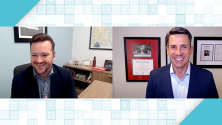I was recently shocked to hear that over 52 percent of companies that were on the Fortune 500 list in the year 2000 no longer exist. The enterprise architect (EA) role has been around for a long time, but in that time companies have never faced this amount of rapidly changing customer expectations and the battle against extinction that they do today. How can they stay relevant and even disrupt rather than being disrupted in this digital era? “The new EA” is the only practice that can truly give companies hope in navigating change to business models that are highly driven by and with technology.
Like the CIO role, EA has been reshaped many times to meet the challenges of the day. In the past, it was just the person who focused on technical IT planning aspects and got promoted to this new role. Today, the enterprise architect must be much more of a business and technical “renaissance architect” to really bring out the intended strategy and potential from all areas of the company — not just IT.
Some EA teams may have good buzz in areas of the business. But we can’t rely on that. As a group of professionals we really need to reach out and do some brainstorming with new players, such as the chief digital officer (CDO). We need to find out what he or she is thinking of in terms of digital transformation and how it will drive growth. We must sometimes derive the overarching business strategy based on anything we can find — from the annual reports to the reason the original founder of the company got out of bed in the morning. We need to understand the company DNA and culture. Then we can define what outcomes we should drive toward, and what the specific measurable goals will be. From there we can collaborate and build trust with the business areas.
At my company, we boiled down our technology strategies to one page. It is very simplified and concise, with clear statements of what we want to drive toward and what the level of future capabilities and results will be. Having a conversation using that document has been a key conversation starter and way to get everyone thinking in a much broader context. It is no longer just a technology strategy; it's a collaborative business-technology strategy that becomes more real with every iteration.
Crossing the imaginary line
In terms of getting closer to the business, I realized at one point that that there was an imaginary line deterring us from reaching out to business folks. At the same time, they had their own line of business application people on the IT side they worked with, but it is critically important that we no longer see that as a deterrent to building relationships.
In my experience, a lot of times enterprise architects are trying to operate using a strict and highly formal framework and process (TOGAF, DODAF etc.), and it kind of goes right over the heads of all the business folks. You weren’t hired by your company to “do TOGAF!” It’s really about reaching out and starting to make human connection with those people and really showing, candidly, how you have a passion for what they do and that you’re going to help them achieve their goals. Outline a couple of things that you can do to specifically help them drive toward a goal or make them realize what you’re trying to do to help in getting it done.
All this being said, enterprise architecture is different everywhere. That’s another part of the confusion. It’s not a highly standardized role that everybody knows. It’s pretty well understood what a Java developer at X level can do. It’s easy to understand and easy to measure.
In terms of EA, for a long time people were saying we were there for “business and IT alignment,” but nobody really thinks they need to be “aligned.” That’s why I work to drive the fact that we are not focused on “aligning.” We are going to help the organization accelerate, adapt and drive toward the change that we need to be competitive and to deliver new capabilities. For me, it’s really about being the catalyst for change, trying to open people’s minds up and say “what if.” It might seem like this grand kind of thing, but it can really be as simple as asking a lot of questions, surfacing ideas and trying to open people up to things that they may not have been open to when the conversation began.





